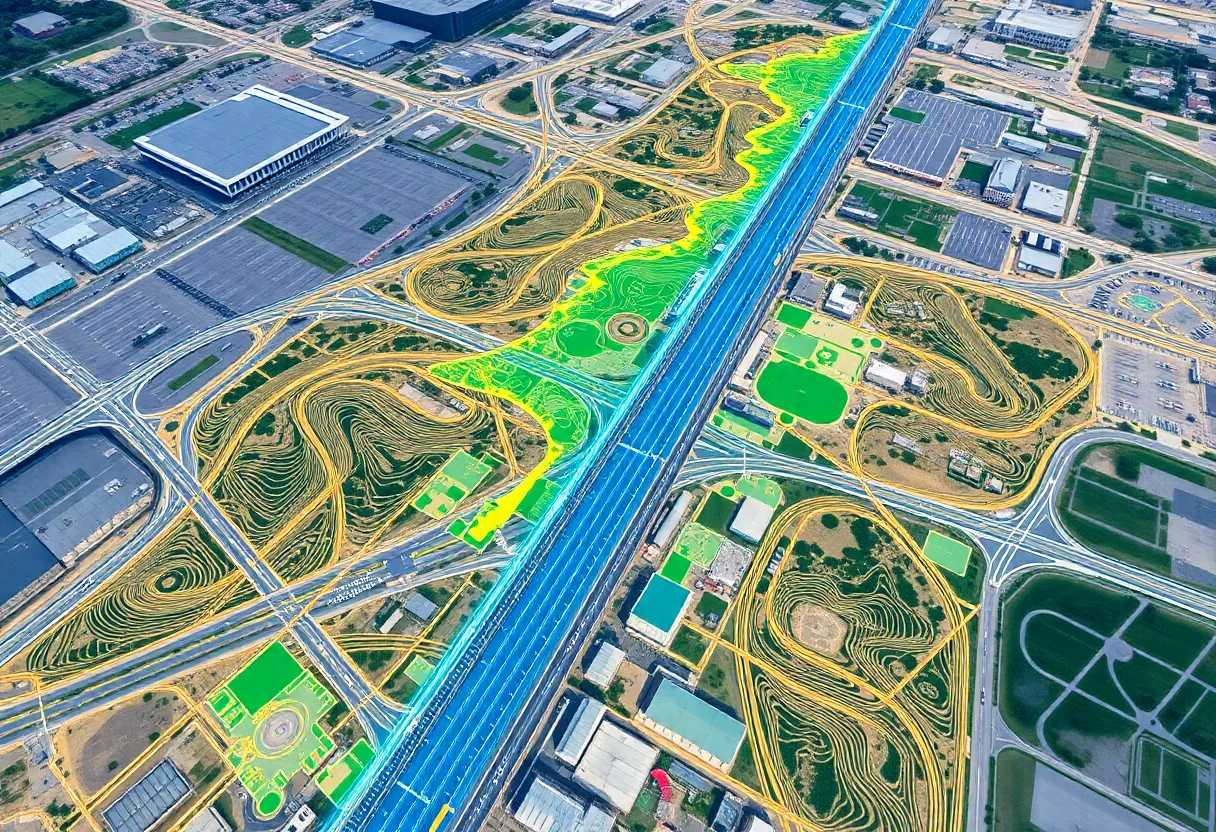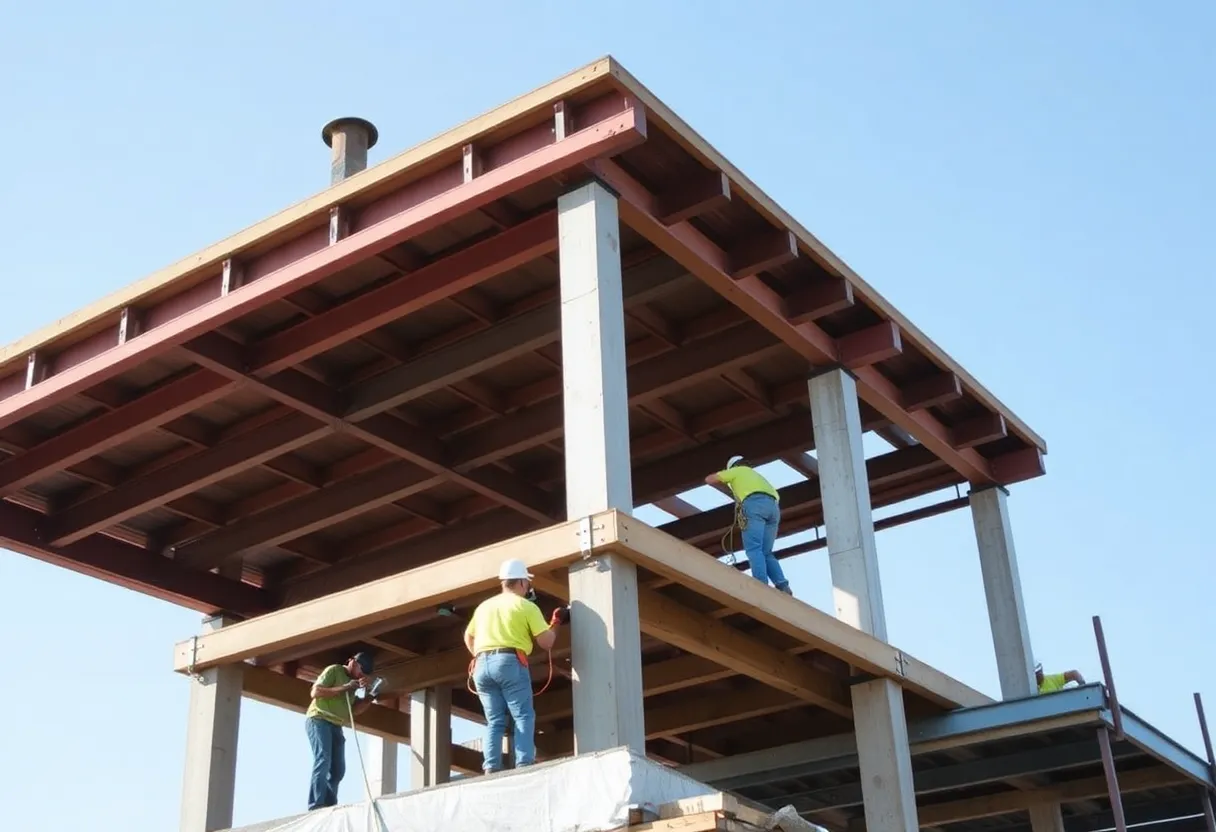News Summary
The integration of Geographic Information Systems (GIS) and Building Information Modeling (BIM) is revolutionizing corridor mapping in the AEC industry. This collaboration demands professionals to understand each other’s fields to leverage large datasets effectively. A focus on aerial mapping, data collection, and project management plays a crucial role in ensuring successful outcomes. The upcoming Esri User Conference will address these technological advancements and the importance of seamless data interoperability between GIS and BIM systems, which is vital for robust infrastructure development.
Emerging Technologies Shape Corridor Mapping with GIS and BIM
The integration of Geographic Information Systems (GIS) and Building Information Modeling (BIM) is transforming the landscape of corridor mapping projects in the Architecture, Engineering, and Construction (AEC) industry. As these two realms merge, professionals from both fields must acquire a new understanding of each other’s practices to effectively generate actionable insights from extensive datasets.
Aircraft Options for Corridor Mapping
A recent discussion highlighted the significance of aerial mapping workflows, particularly focusing on corridor projects, which can involve both crewed and uncrewed aircraft. The choice between these platforms is based on project-specific details rather than one being universally superior. Each option produces a large volume of data that demands thorough post-collection processing to achieve its full potential in data interpretation.
Data Collection for Corridor Mapping
Corridor mapping involves the capture of spatial data across extensive linear features such as transmission lines, road networks, pipelines, and railways. These projects can span hundreds of miles, and the types of data collected are diverse. Common data formats include lidar, multispectral imagery, high-resolution imagery for photogrammetry, and Global Navigation Satellite System (GNSS) data for precise georeferencing.
The Role of GIS in Project Management
GIS serves as the geographic backbone for construction projects, enabling effective visualization, analysis, and maintenance of spatial data. It is particularly important for tasks such as environmental impact assessments and right-of-way planning. Additionally, GIS tools enhance asset inventory tracking and enable change detection over time through comprehensive data analysis.
Transition to BIM for Detailed Modeling
After GIS has conducted its analysis, BIM technology steps in to facilitate detailed object-level modeling within the specified geographic framework. This transition is crucial for design, construction, and ongoing maintenance activities by ensuring that all project stakeholders can access a clear and well-structured information flow.
The Partnership Between GIS and BIM
The collaboration between GIS and BIM technologies is increasingly highlighted by partnerships aimed at improving interoperability within projects. This collaboration emphasizes the necessity for both GIS and AEC professionals to grasp core concepts in each other’s fields for seamless project execution.
Career Cross-Training for Success
With the evolving complexity of corridor mapping, effective career cross-training has emerged as a vital component for successful project outcomes. Traditionally, GIS and BIM departments have operated in silos; however, fostering collaboration between these two areas is critical for improving the organization and usage of massive datasets. This increasing need for cross-disciplinary skills is essential for enhancing work quality and ensuring efficient project delivery.
Technological Innovations and Future Events
The upcoming Esri User Conference, scheduled for July 14-18, 2025, will explore the theme “GIS—Integrating Everything, Everywhere.” This event will showcase various sessions focused on the integration of GIS with CAD and BIM workflows, featuring technical sessions by prominent software providers. Innovations such as artificial intelligence for operational efficiency and advanced visualization techniques combining 3D and GIS technologies will also be discussed.
Streamlining Data Management
For corridor mapping projects to be successful, data management and interoperability between GIS and BIM systems must be streamlined. New features, such as Gaussian splatting for volumetric rendering, are expected to enhance GIS applications and data processing capabilities, optimizing project workflows across planning, construction, and asset management.
Conclusion
The collaboration of GIS and BIM is essential for creating clean, robust, and durable infrastructure from vast linear datasets. The growing complexity and scale of corridor mapping projects highlight the importance of effective data organization, analysis, and usage, ultimately shaping better decision-making and outcomes in the AEC sector.
Deeper Dive: News & Info About This Topic
Additional Resources
- Geo Week News: Corridor Mapping, Aerial Surveying, GIS & BIM
- Esri Blog: GIS and BIM/CAD at the 2025 Esri User Conference
- ENR: Esri Bringing Gaussian Splats, More AI into Its ArcGIS Mapping Tools
- Wikipedia: Geographic Information System
- Autodesk Blog: Making Future Infrastructure Real with BIM and GIS Esri User Conference 2025
- Encyclopedia Britannica: Building Information Modeling
Author: Construction FL News
The FLORIDA STAFF WRITER represents the experienced team at constructionflnews.com, your go-to source for actionable local news and information in Florida and beyond. Specializing in "news you can use," we cover essential topics like product reviews for personal and business needs, local business directories, politics, real estate trends, neighborhood insights, and state news affecting the area—with deep expertise drawn from years of dedicated reporting and strong community input, including local press releases and business updates. We deliver top reporting on high-value events such as the Florida Build Expo, major infrastructure projects, and advancements in construction technology showcases. Our coverage extends to key organizations like the Associated Builders and Contractors of Florida and the Florida Home Builders Association, plus leading businesses in construction and legal services that power the local economy such as CMiC Global and Shutts & Bowen LLP. As part of the broader network, including constructioncanews.com, constructionnynews.com, and constructiontxnews.com, we provide comprehensive, credible insights into the dynamic construction landscape across multiple states.





